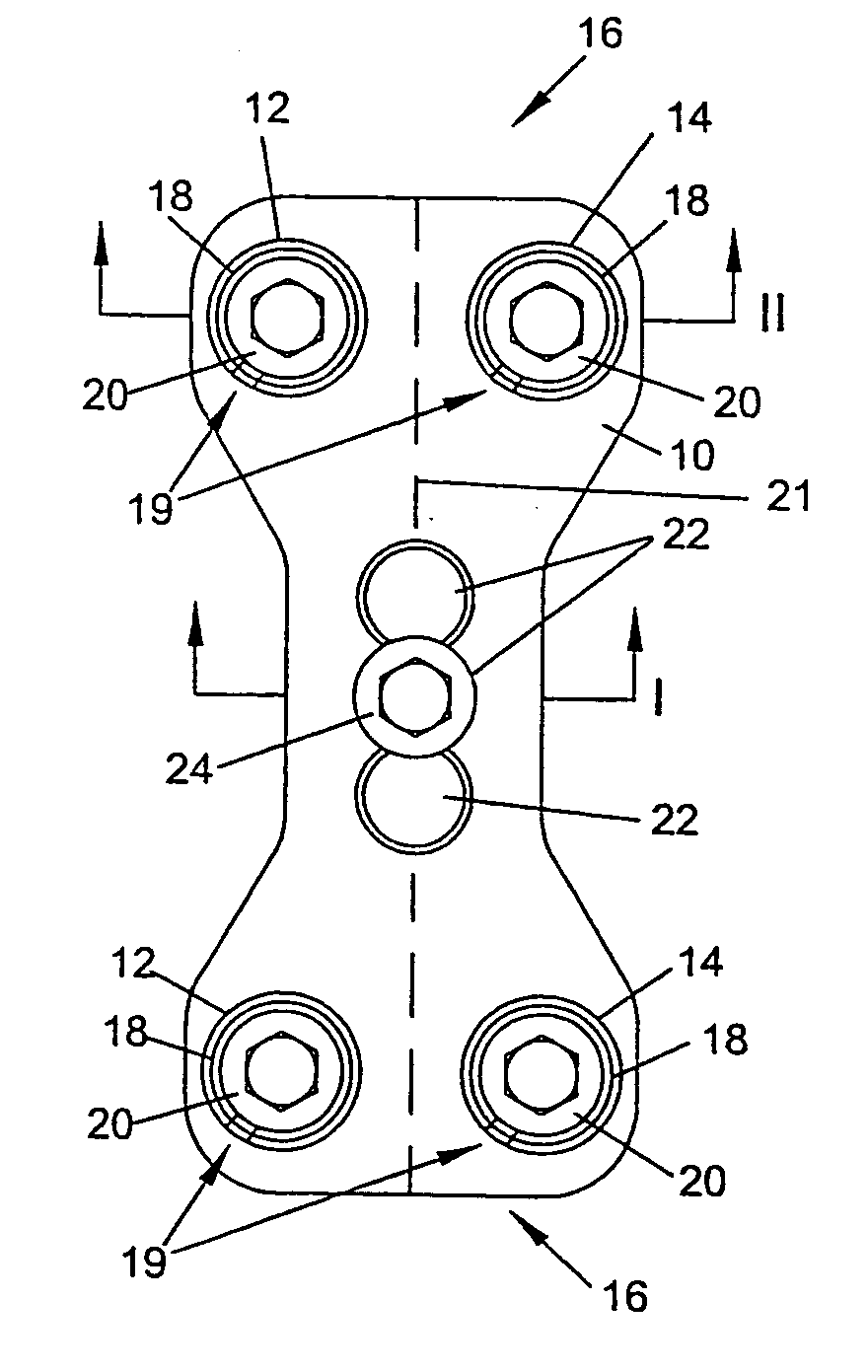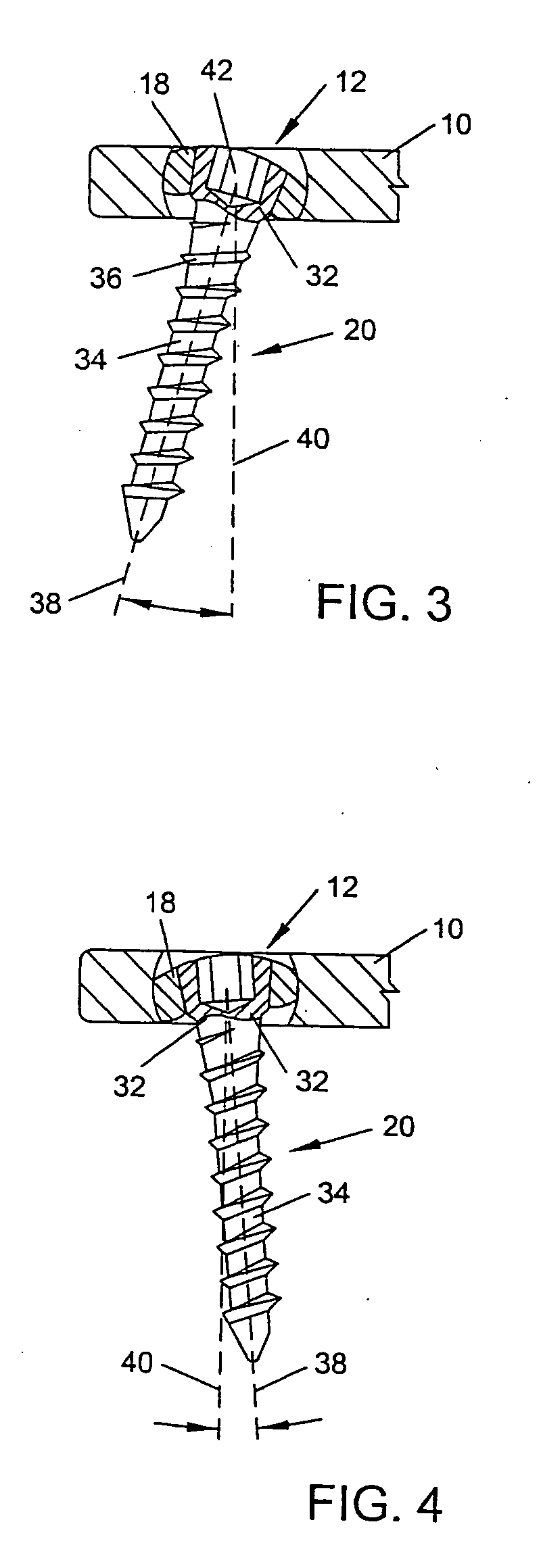System and method for stabilizing the human spine with a bone plate
a technology of bone plate and human spine, which is applied in the field of spine fixation system, can solve the problems of screw backout, risky fixation of bone plate to cervical spine, and risk to distal soft tissue structures
- Summary
- Abstract
- Description
- Claims
- Application Information
AI Technical Summary
Benefits of technology
Problems solved by technology
Method used
Image
Examples
Embodiment Construction
[0030]FIG. 1 depicts a top plan view of an embodiment of a spinal plating system. The spinal plating system may be used to correct problems in the lumbar and cervical portions of the spine. For example, the plating system may be implanted into the occiput bone which is located at the base of the skull. The plating system is preferably installed anterior to the spine. The spinal plating system preferably includes a plate 10 that may be placed adjacent to a portion of the spine. The length of plate 10 is preferably chosen so that the plate may span between at least two vertebrae. Plate 10 preferably includes a pair of end boreholes 12 and 14 located at opposite ends 16 of plate 10. End boreholes 12 and 14 are preferably formed vertically through plate 10 such that they extend from an upper surface to a lower surface of the plate. End boreholes 12 and 14 are preferably spaced from a longitudinal midline axis 21 of plate 10 by the same distance.
[0031] End boreholes 12 and 14 are prefer...
PUM
 Login to View More
Login to View More Abstract
Description
Claims
Application Information
 Login to View More
Login to View More - R&D
- Intellectual Property
- Life Sciences
- Materials
- Tech Scout
- Unparalleled Data Quality
- Higher Quality Content
- 60% Fewer Hallucinations
Browse by: Latest US Patents, China's latest patents, Technical Efficacy Thesaurus, Application Domain, Technology Topic, Popular Technical Reports.
© 2025 PatSnap. All rights reserved.Legal|Privacy policy|Modern Slavery Act Transparency Statement|Sitemap|About US| Contact US: help@patsnap.com



